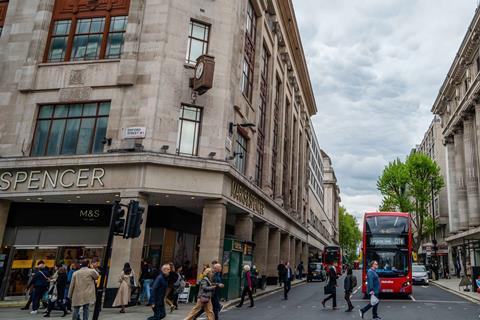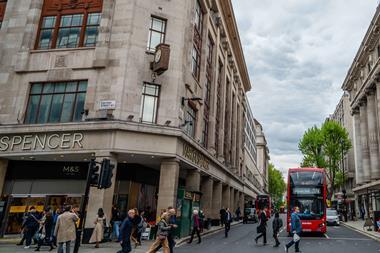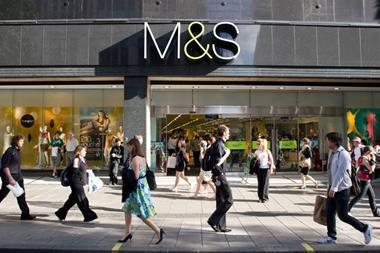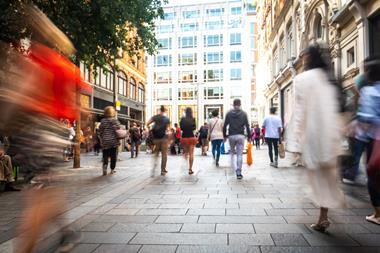Marks & Spencer has elaborated on the public realm and sustainability benefits of the proposed redevelopment of its flagship Oxford Street store ahead of an inquiry into the proposals.

An inquiry into the plan, which has prompted controversy among campaigners opposed to it on environmental and heritage grounds, will begin on October 25.
The inquiry will consider issues such as the development’s contribution to local heritage and public realm, as well as environmental impact and potential to aid the revitalisation of Oxford Street.
Marks & Spencer said that the project would include the creation of a new pocket park, called St Michael’s Place, hosting a cafe and retail with seating, planting and trees “to create a natural sheltered canopy in the heart of the West End”.
It will also “promote circular economy principles” – 95% of the existing building materials will be recovered, recycled or reused.
The scheme has the backing of Westminster Council and business improvement organisation the New West End Company, but has attracted criticism from a range of individuals and organisations – particularly over the 1930s Orchard House part of the existing premises.
M&S group operations director Sacha Berendji said: “Our proposed development at our Marble Arch site is the culmination of two years’ work with Westminster City Council, the GLA and the local business and resident community, which have supported the development at every stage.
“At this week’s case management conference, Westminster City Council reiterated their continued support for our scheme, which is the only retail-led regeneration in the whole of Oxford Street, where one in five shops sit vacant and footfall remains 30% down on pre-pandemic levels.
“The existing buildings, of which Orchard House makes up less than a third of the site, have been excluded from surrounding Conservation Areas and Historic England concluded none were of listable status, testament to their low design and heritage value and, while safe, cannot be modernised through refitting as it’s made up of three separate buildings containing asbestos.
“Our proposed development also involves significant improvements to the public realm designed to fit in comfortably with the existing streetscape. This includes re-opening a heritage east-west pedestrian arcade through the site from Orchard Street to Granville Place, opening up the entrance to Portman Mews, and creating a new pocket park, St Michael’s Place, which will feature additional seating, trees and planting.
“There are clear sustainability benefits to our plans with an independent assessment of the building’s carbon impact across its whole life cycle, undertaken by leading environmental consultants Arup, concluding that the new build offered significant sustainability advantages over a refurbishment.
“The scheme will promote circular economy principles, with 95% of the existing building material being recovered, recycled or reused. It will also use less than a quarter of the energy of today’s structure and, on completion, will be amongst the top 10% performing buildings in London. Even a heavy refurbishment of the buildings would involve more embodied carbon and leave structural flaws unremedied, limiting our options to improve energy usage.
“In addition to carbon reduction, our investment will deliver a better place to shop for our customers, a better place to work for our colleagues, and a better public realm for our local community.”



























No comments yet